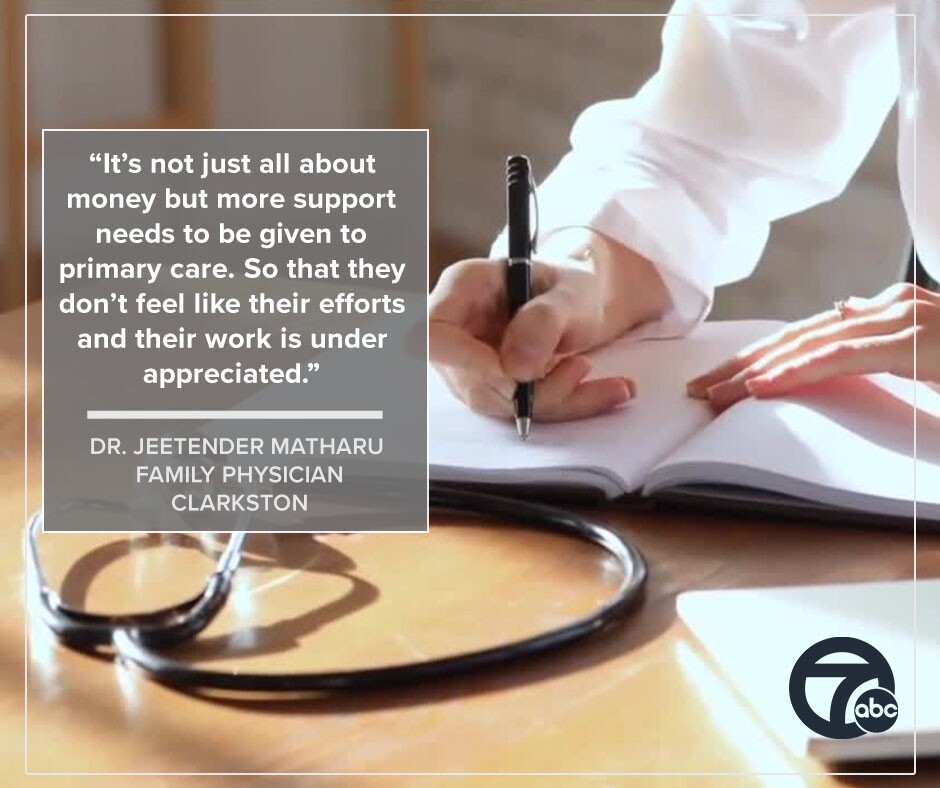CLARKSTON, Mich. (WYXZ) — Michigan is hundreds of doctors short when it comes to primary care. The number is expected to reach over 800 by the end of the decade, which means delayed access to care and potentially life-saving diagnoses.
Fortunately, there’s plenty lawmakers can do to help alleviate the problem.
Julie Ngo is a medical student at MSU and will be starting her residency at Henry Ford in July.

“Primary care was such an easy option for me. I was thinking about family medicine very early in my career,” explained Ngo.
She loves the diversity of work and importance of the position in a community.

“For example, there was one patient where I was able to suture his stab wound as well as talking to him about his diabetic medication. And I think that’s so cool to be able to do that in one doctor’s appointment,” said Ngo.
She said she knows primary care is seen as less glamorous and lower paid.
“There is that stigma and unfortunately, especially with Michigan, it may not be as competitive in terms of family medicine salaries,” Ngo explained.
She believes improving pay would help physician retention and attract more doctors to underserved communities. Additionally, she also has another suggestion.
“Reducing that administrative burden and making it easier for us to focus on the patient itself, rather than the paperwork that’s involved in terms of dealing with insurance for example, pharmaceuticals, etc,” said Ngo.
Dr. Jeetender Matharu is a family physician in Clarkston. He reacted to the shortage.

“It’s troubling. It’s concerning for the future," admitted Matharu.
He said he got into family medicine because it is rewarding to him.

“It’s not just all about money but more support needs to be given to primary care. So that they don’t feel like their efforts and their work is under appreciated,” explained Matharu.
He agreed with Julie Ngo, saying administrative work has become an increasing burden over the years, taking away time from patient care.
“We should have some type of plan or mechanism to retain these people,” Matharu said.
Julie Phillips is a Family Doctor and Chair of Family Medicine at MSU’s College of Human Medicine. She explained the magnitude of the state’s problem.

“We’re projected to be short more than 800 primary care physicians by 2030,” said Phillips.
She emphasized that primary care keeps people out of the emergency room which saves money.
“There are not many things in the world that actually have a positive impact and also help save money at the same time. So primary care doctors are pretty important and magical in that way,” said Phillips.

Michigan has two programs to incentivize med students to get into primary care. One is MIDOCs, which supplements residency programs so they have the funds they need to educate primary care doctors.

The other is the Michigan State Loan Repayment Program which pays back or forgives up to $300,000 dollars of a med student’s loans. However, Phillips says they system needs improvement.
“About half the people who qualify and apply for the Michigan Loan Repayment Program don’t get the funds,” explained Phillips. “One thing we could do would be to invest in that program more substantially as a state and that would really make a big difference.”




